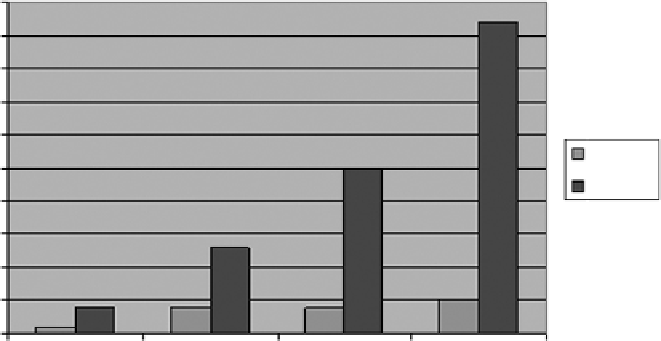Information Technology Reference
In-Depth Information
50
45
40
35
30
Onsite
Offshore
25
20
15
10
5
0
Quarter 1
Quarter 2
Quarter 3
Quarter 4
Figure 11..
Service provider staff strength for first four quarters.
with a central quality group to be used for the pilot. The team also brought subject
matter experts to take high-level domain and technology requirements for the proj-
ect (see Figure 11.5).
11.6 .8
Process Model
There has been a lot of discussion about which process model fits well to what kind
of software project. The reality is that even if you have implemented a well-defined
and refined process model, all tasks on a project need more details than the guide-
lines outlined in these process models. Software testing is such a specific activity
where models are still evolving. There is always a debate about whether one should
follow the waterfall model or go for an iterative approach.
These arguments can go on and on, but people who are associated with different
kinds of approaches for adopting process models will vouch for a suitable model
for each project.
In a central quality center approach, things are totally different. We are talking
of not one project but a lot of projects. We are talking of shared resources and a rich
pool of expertise to be tapped for each project. We are talking of providing a standard
platform for all projects so that uniform quality is attained, and at the same time, due
to adherence to mature processes, better quality could be achieved on all projects.
In the standard process adopted by the service provider for all of the projects
for all customers, the process steps were engagement/initiation, knowledge transfer,
test planning and estimation, test design, automation script creation using key-
word-driven framework, test execution cycle, analysis and reporting, archiving of
project details, and finally preparation for the next release (see
Figure 11.6)
.





